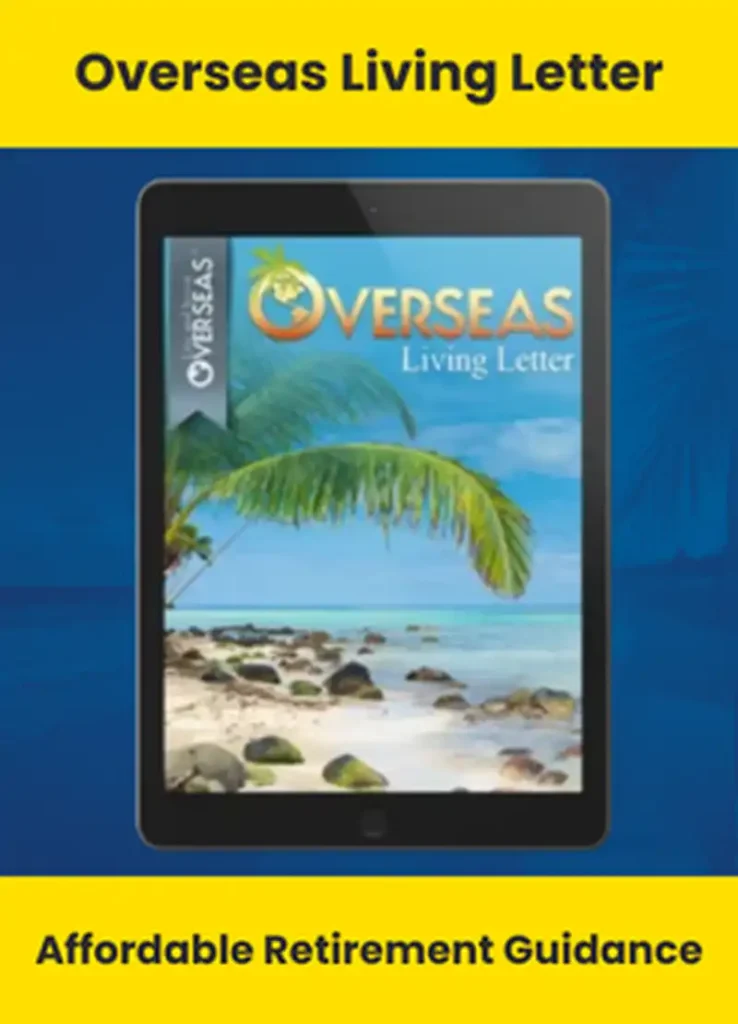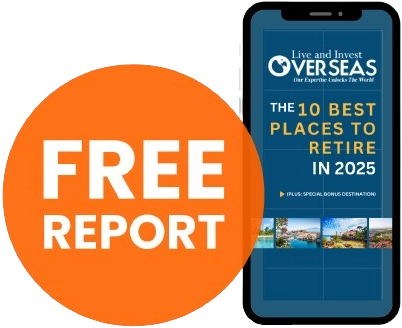After our Live And Invest in Spain Conference in mid-September, we hosted our Elite Members for special activities, the first being a paella-making class, which turned out to be more fun than any of us could have counted on.
After a short bus ride to the fun and hip neighborhood of Ruzafa, we were ushered into My First Paella’s kitchen and informed that we were an especially lucky crew—we were coming on National Paella Day.
World Paella Day
Our class was at 5 p.m., though, which is tapas hour in Spain, many hours from dinnertime.
So we started with a crash course in sangria making…
Start Your New Life Today, Overseas
Sangria 101
I thought I knew all about it. I’ve made sangria dozens of times and in many different ways in my life.
It’s such an adaptable drink, open to customization depending on what you have on hand. It’s the best way to make a bad wine drinkable, and the best way to enjoy wine in a hot climate.
But I was shocked to hear that a good Spaniard has a secret ingredient that I shudder at using… orange soda. Whether Fanta, Orangina, or other, this is what the typical Spaniard always has on hand to add some fizz, sugar, and orange flavor all at once. I was galled on principle, but, admittedly, the outcome was tasty.
We helped to make a few pitchers of the iced, fruity red drink, squeezing in some fresh lemon, orange, spooning in sugar, and kicking up the alcohol content with rum and vermouth
The jugs were on hand and self-serve throughout the two hours we spent in “class.” And now that we knew how to make it, our tutors told us, we were the bartenders. Whoever emptied the last pitcher from there on out was tasked to mix more…
We sat then for some tapas. Papas bravas, serrano ham, Manchego cheese, mussels, and fresh olives… personally, I could make a dinner just out of these snacks any day. We got to know those sitting at our table. A perfect example of the tapas tradition…
On to the main course…
First, the word paella.
The dish derives its name from the pan used for cooking.
Our chefs warn us, “When foreigners move to Spain, they’ll hear ‘grab the paella from the cabinet’… or ‘you’ll need to buy a good paella.’
“They are always confused.
“It’s not that they are being asked for food, but for a frying pan. Even more confusing, the paella could be the giant pan used for paella… or it could be a little egg pan, or anything in between.
“It’s a universal term, so don’t take it literally.”
After choosing our preferred protein: rabbit, pork, or chicken, we were introduced to the rest of the ingredients.
Step 1: Frying the meat
A true paella is made up of but 10 ingredients. Traditionally with both chicken and rabbit, you add round rice, olive oil, butter beans, flat green beans, tomatoes, lots of garlic, lots of salt, a pinch of saffron, and water. To ours, we substituted the second meat for snails—new to me—and we added a dash of paprika and a few sprigs of rosemary.
“Use the rosemary as a broom to sweep the rice off the surface and to the bottom. It’s like a Zen garden you can eat,” we were told.
We were all given a job, some stir-fried the meat, some snapped beans, some minced garlic, some grated tomato, some ground the saffron infusion.
Meat cooked, beans on the flame
Water added, broth in the making
As we cooked together, we shared cooking stories—one gentleman was a professional barbeque chef, a master of meats already, and many others shared stories of favorite recipes from childhood or from their experiences around the world.
All ingredients in the pan, we continue to add spices and salt.
Team rabbit and team chicken began to get competitive as we compared boiling points and aromas…
The final touch…
Start Your New Life Today, Overseas
Letting it simmer
All the ingredients added, we waited for the rice to simmer and were served shots of a Valencian specialty, Cassalla Cerveró, an anis liqueur that typically accompanies paella. It’s a working man’s liquor, popular with farmers and workers, and most commonly enjoyed in the afternoon after a large meal as a digestive.
Shots!
We sat down and were served our paella… and wine…
Sitting down to our homemade dinner
After the class, we herded together and walked to the nearest bus stop, about a 15-minute walk, a pleasant stroll, much of which bordered the Turia Gardens.
A few minutes later, we were back at our hotel, ready for a good night’s sleep.
But a few things struck me throughout the lesson, born of some of the general tips we were given as we cooked…
- “It all depends on elevation and humidity…”
In my experience, this couldn’t be truer.
I’m not talking about cooking or baking, though any good chef will tell you these should be your top considerations if they apply.
I mean for life in general.
I lived in Panama for seven years and humidity was a way of life. Utterly inescapable. Likewise would it be in many parts of the Spanish coast.
But if you elevate yourself a bit—easily done in many regions of Spain, most famously the Pyrenees, you can not only avoid humidity but the generally high year-round temperatures, if you choose.
But, taken less literally… it’s all about the atmosphere.
What you surround yourself with makes a big impact on your life.
Those around you, the things you choose to expose yourself to, and the ambience you create in your life will dictate how you move through your new life overseas.
You are responsible for creating your own feng shui, wherever it may be.
- “You can always come back from any mistake…”
Whether you’re cooking or making an international move, nothing is a one-way street. You can always correct… overcorrect… backtrack… or move on.
This advice applies to all things in life.
Personally, I have a tendency toward “disaster spirals”… I think one thing gone wrong means it’s all gone wrong… forever… and there’s no coming back from it.
But that’s just silly, of course.
Very few, if any, of the decisions we make in life are like jumping off a cliff—you can always come back from them, whether that means literally going back, back “home,” for example, or moving on to a new home.
Maybe you spend half your time overseas… or just a few months a year…
It’s all controllable.
- “Eating from the pan is the best way to eat…”
This has an obvious literal meaning… and couldn’t be more well taken by this amateur chef who has already had her fill by the time she serves the table…
But take it more as a metaphor, and it becomes a truly philosophical axiom.
Throw caution to the wind.
Get out of your comfort zone.
Drink from the tap.
Take a leap of faith.
And, bridging the gap between literal and metaphor, taste before you serve.
Test before you buy.
A taste from the pan is a good way to see if you want to sit down for the full dish… get my meaning?
- “Open fire is the best way to cook…”
Forget what you know and the way you used to do things and embrace the local way of life.
Forget the oven; bypass the stove.
Light a fire and cook your paella on an open flame.
- “All flavors eventually blend…”
You will find your place in your new life, even if it’s slower to come than you anticipated.
Anyone can fit in anywhere, you just have to let it all mellow a bit… leading us to:
- “Just let it simmer…”
When you feel the rising panic—which, I guarantee, at some point, you will—just take a beat. Don’t make any rash decisions.
Remind yourself why you wanted to live here in the first place and indulge in it.
Go to a museum or eat at a café.
Walk in the park or get lost in alleyways.
Take a bike ride or a boat ride.
Allow yourself to be enchanted again.
Get in touch with a local friend, or go out to a happy hour and make a new one.
Let yourself simmer a little in your current situation and—if you allow yourself to appreciate your new lifestyle—as sure as I am that the panic will come, I am sure it will pass.
- “Too much salt is the right amount of salt…”
You can’t have too much of a good thing.
OK, that’s not exactly true… but take the advice with a grain of salt (wink).
Americans have a tendency towards puritanism, it’s written in our history.
Europeans are epicureans… bon vivants… they like to enjoy life’s pleasures and they are unapologetic about it.
As an American, I can say that this way of life doesn’t come naturally to me. I think we can all be too Type-A and too goal driven in North America.
Let that go and relish the good things…
Eat the pastries.
Drink the wine.
Add the salt.
Bonne route,

Kat Kalashian
Editor, In Focus: Europe
Start Your New Life Today, Overseas










